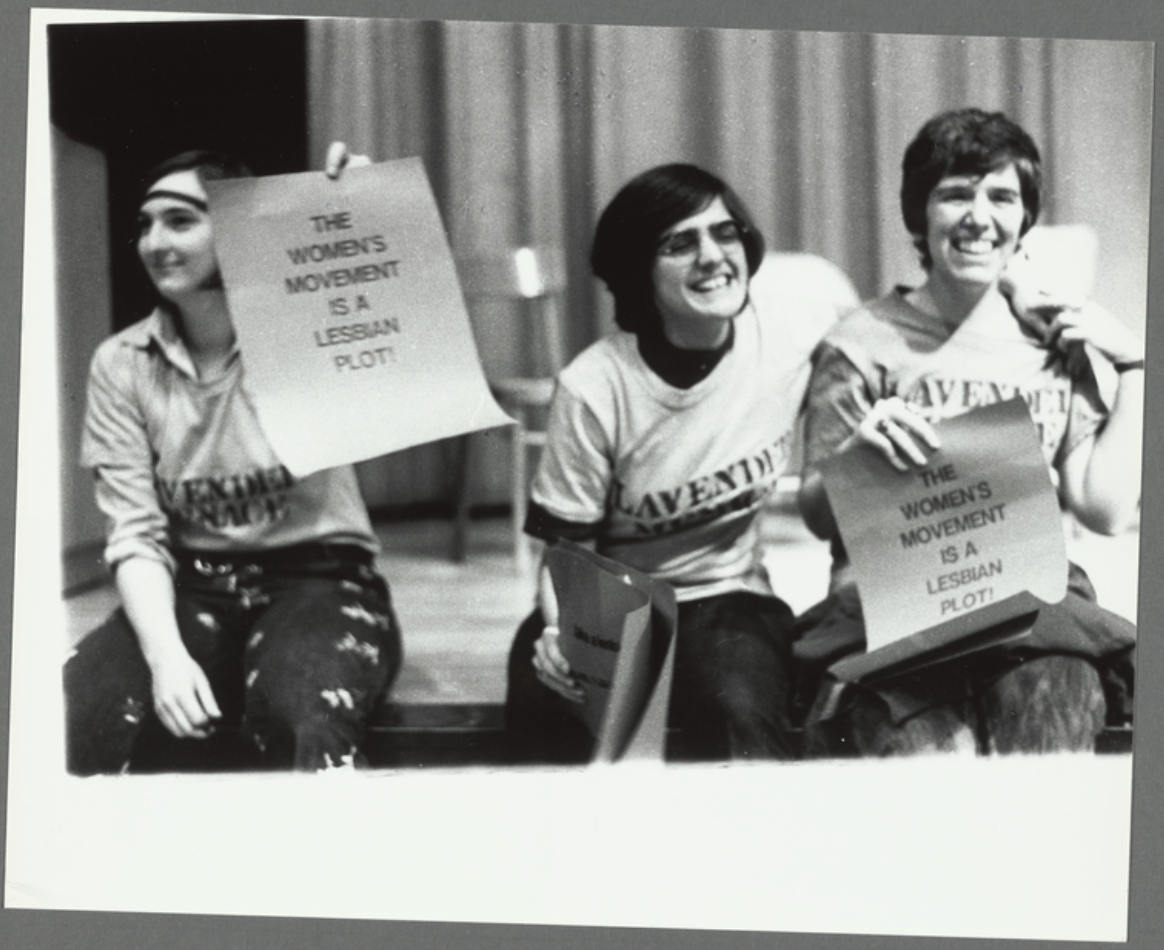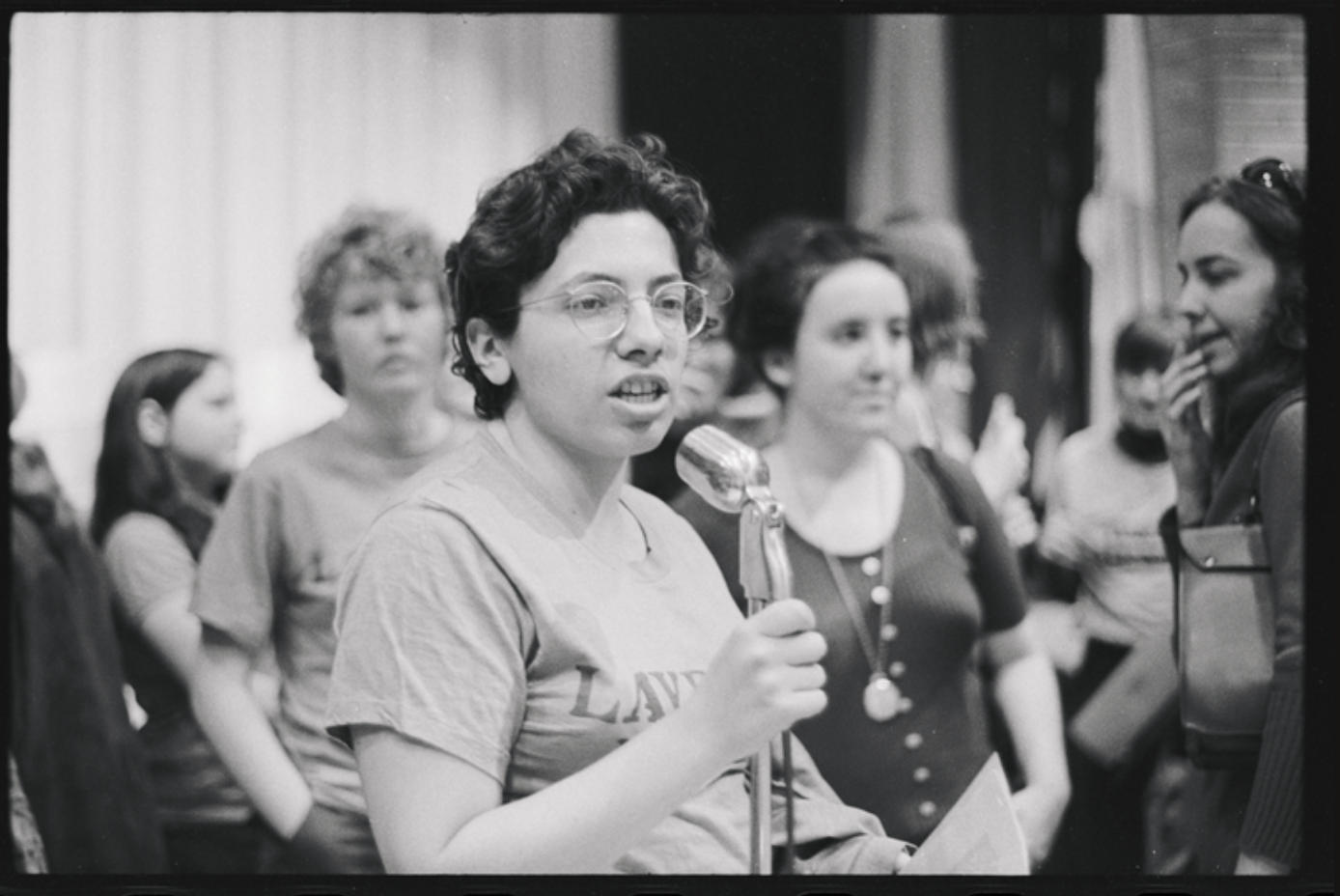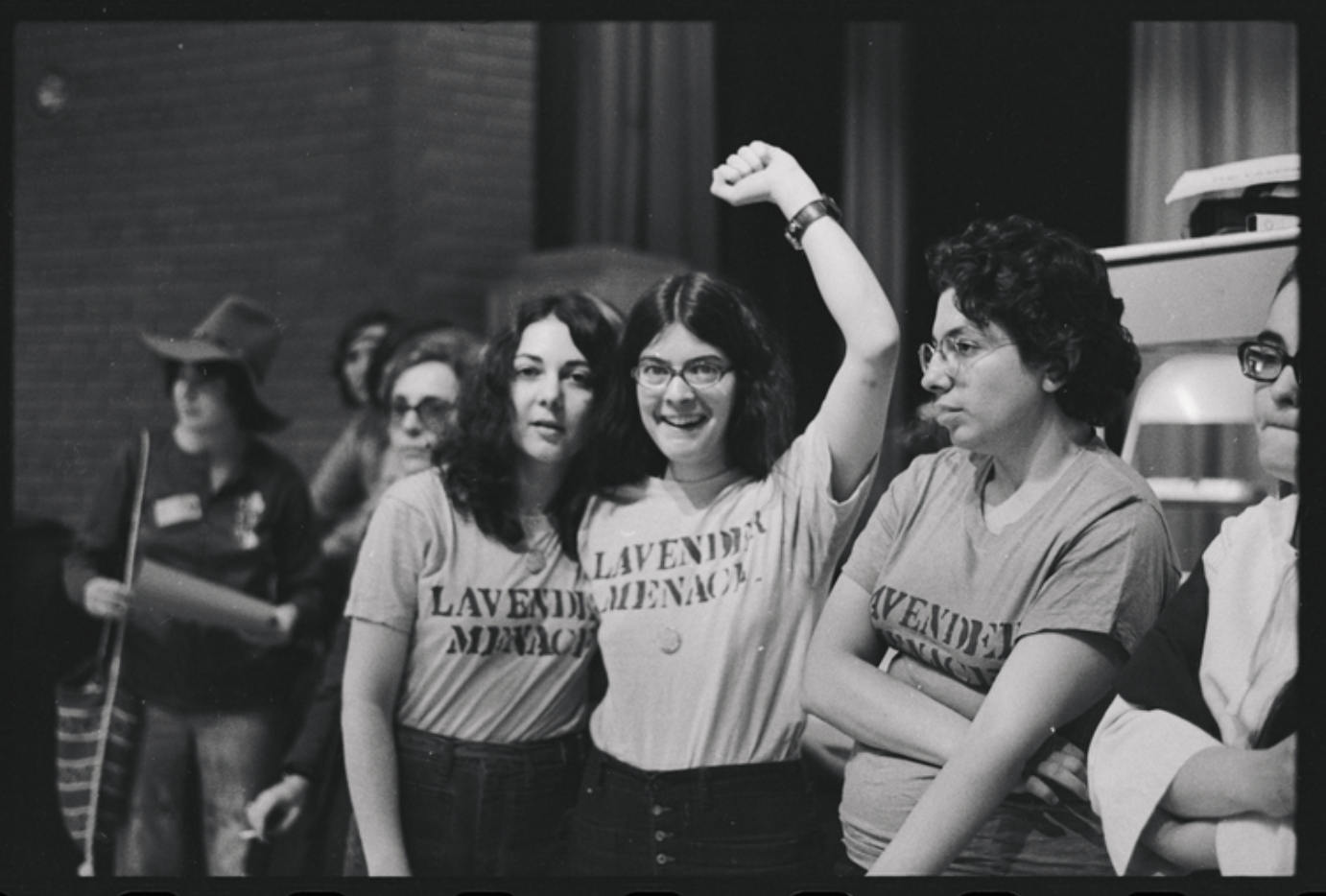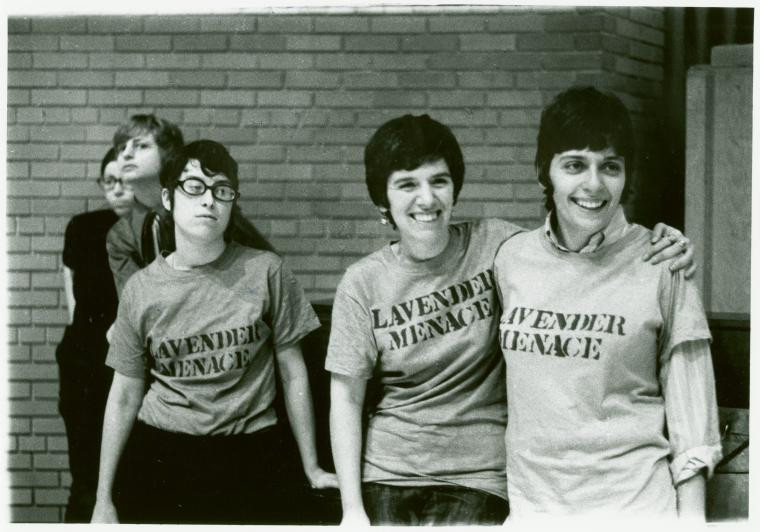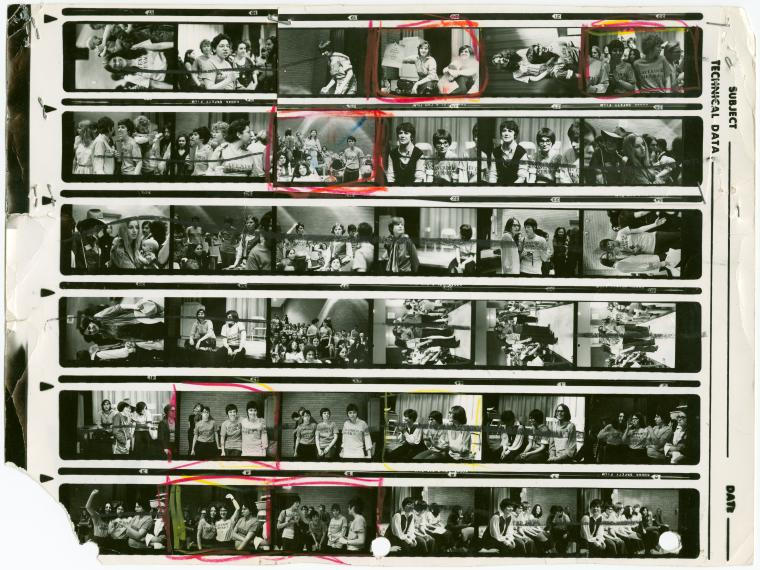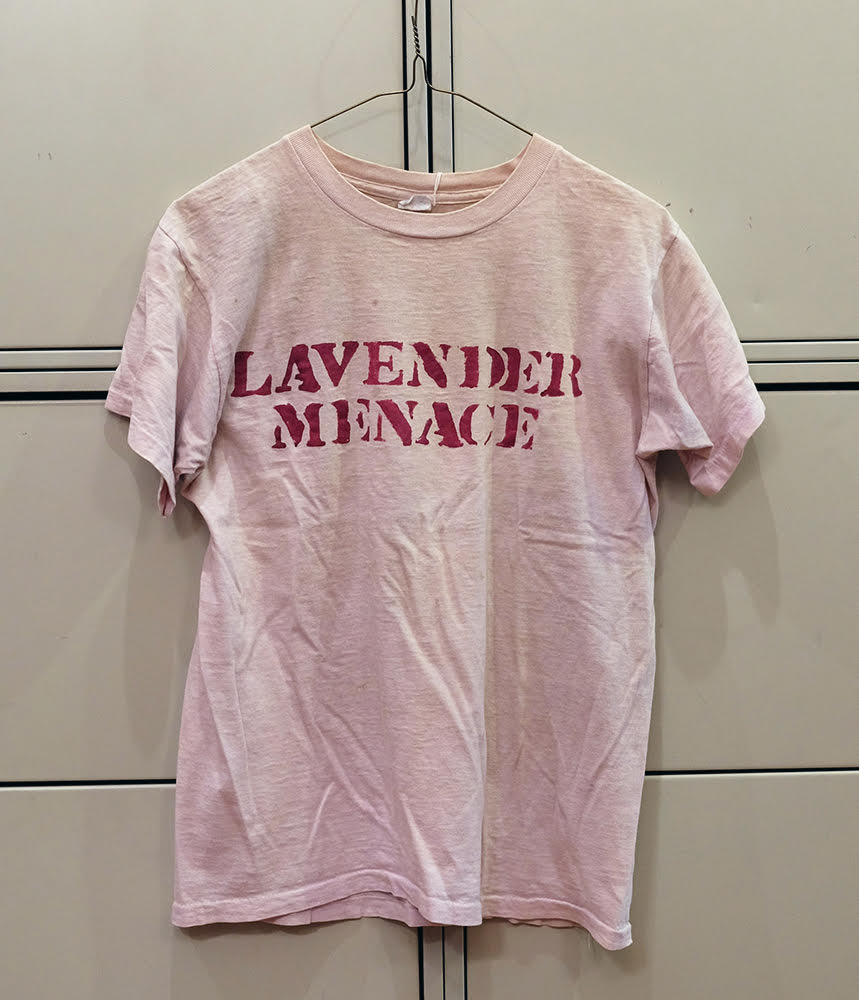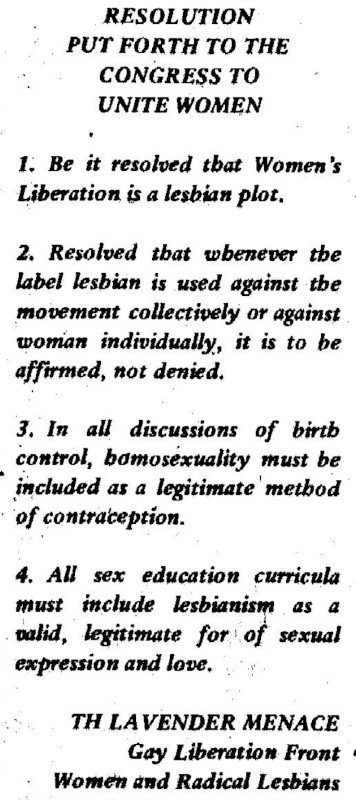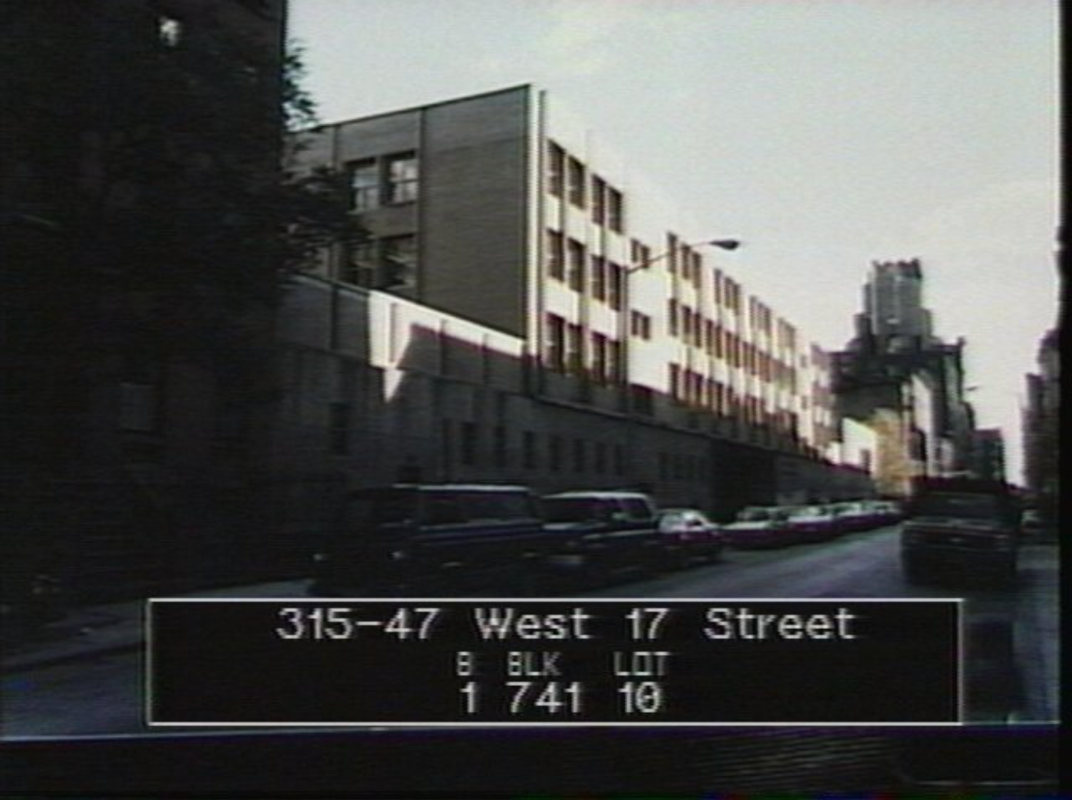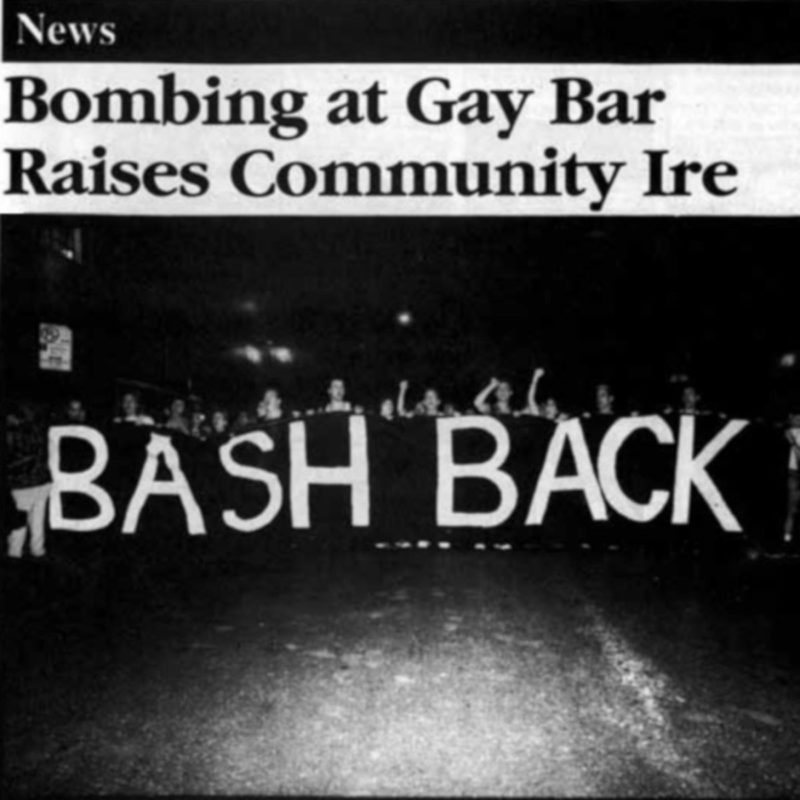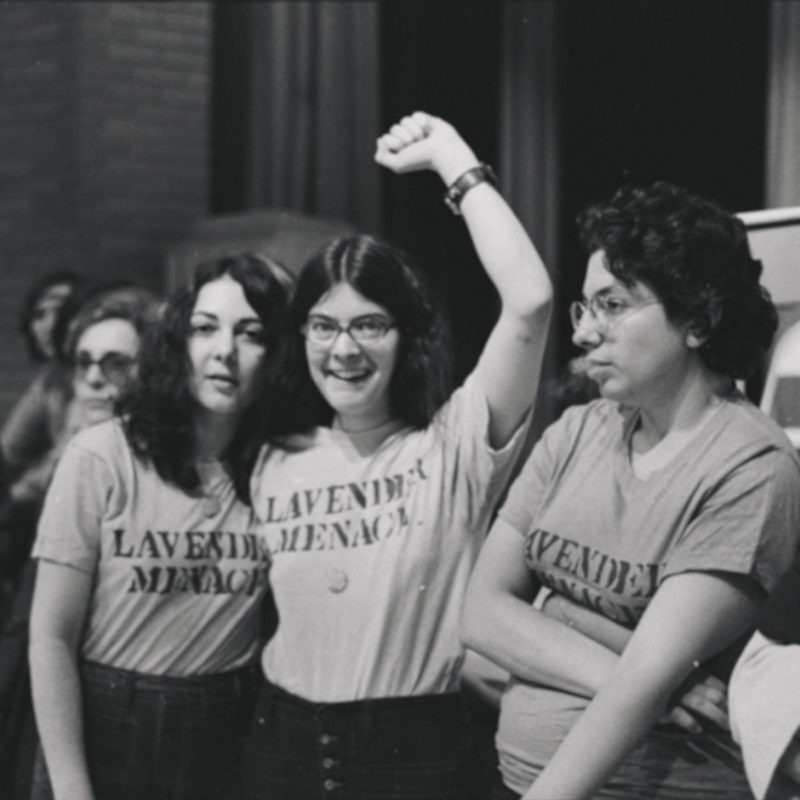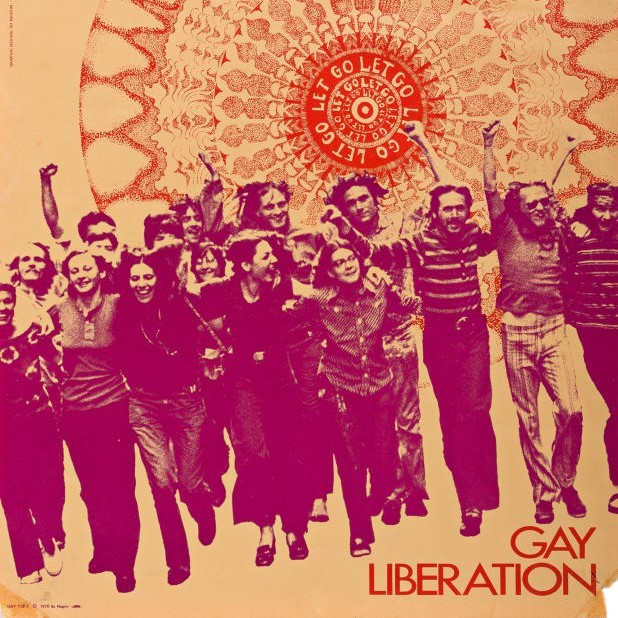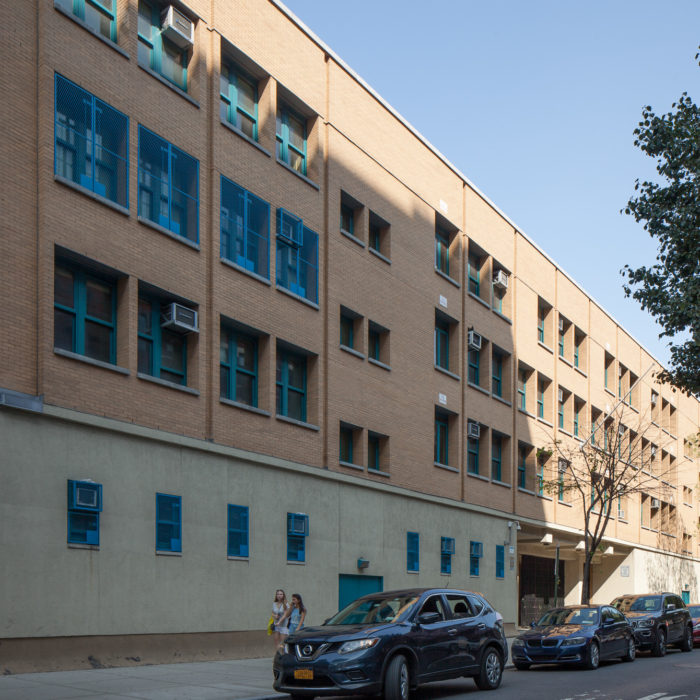
Lavender Menace Action at Second Congress to Unite Women
the building this action was held in was then known as Intermediate School 70 / O. Henry School, and is now known as the NYC Lab School for Collaborative Studies
overview
“Lavender Menace” was an action led by Radicalesbians, with women from the Gay Liberation Front and several feminist organizations, at the National Organization for Women’s (NOW) Second Congress to Unite Women in May 1970 to protest the rejection of lesbians in the second-wave women’s liberation movement.
This action largely led to NOW’s resolution to support lesbians in 1971 and increased visibility for and awareness of lesbian issues nationwide.
History
On the evening of May 1, 1970, lesbians from Radicalesbians, including women from the Gay Liberation Front (GLF) and other feminist groups, conducted a well-organized hijacking of the Second Congress to Unite Women, which was held at Intermediate School 70 in Chelsea. They called this action “Lavender Menace” and demanded, in front of hundreds of women, that the National Organization for Women (NOW) accept lesbianism as an integral part of the women’s liberation movement.
The name “Lavender Menace” is a defiant reference to anti-lesbian comments from NOW leaders. In 1969, NOW president Betty Friedan referred to lesbians as the “lavender menace,” fearing that lesbians would tarnish the movement’s reputation if NOW members were accused of being “man-haters” or “a bunch of dykes.” Susan Brownmiller dismissed lesbians as inconsequential in the movement by calling them a “lavender herring” in a widely-publicized article in The New York Times in March 1970.
Brownmiller’s remarks brought lesbians’ frustration towards NOW to a new height. Afterwards, Michela Griffo attended GLF’s first lesbian dance in a shirt that read, “I am a Lavender Herring.” Inspired by Griffo’s shirt, lesbians gathered in Ellen Broidy’s apartment and Rita Mae Brown’s recently-vacated apartment at 338 East 6th Street to strategize their action and create t-shirts that said “Lavender Menace.”
Right before the start of the Congress’ plenary session, Griffo and Jessica Falstein shifted the conference into planned anarchy with the flick of a light switch:
The lights went out, people heard running, laughter, a rebel yell here and there, and when the lights were turned back on, those same 300 women found themselves in the hands of the LAVENDER MENACE.
Seventeen lesbians wearing Lavender Menace shirts lined the aisles of the school auditorium, yelling and holding signs that declared, “We are all lesbians,” “Lesbianism is a women’s liberation plot,” and “We are your worst nightmare, your best fantasy.” Brown ripped off her shirt to reveal a Lavender Menace shirt underneath. About twenty Menaces hidden in the audience then rose and expressed their support, including Karla Jay, who proclaimed, “Yes, yes, sisters! I’m tired of being in the closet because of the women’s movement.” Martha Shelley grabbed the microphone and Menaces stormed the stage to demand that NOW abandon their schedule and focus on issues of lesbianism.
NOW leaders attempted to restore their planned session and a few women left, but the majority of the audience was engaged by the action’s humor and theatricality. The Menaces held the floor for over two hours, inviting all attendees to share their thoughts and questions on lesbianism. Many straight women thanked Menaces for making them confront their feelings about lesbianism, and Black and working-class women connected with the Menaces’ feelings of exclusion in the women’s liberation movement. Through two days of workshops on lesbianism that replaced the remainder of the Congress’ schedule and a GLF dance at the Church of the Holy Apostles, many straight or questioning women confronted their anti-lesbian practices. The Congress culminated on May 3rd with Menaces presenting the resolutions developed in these workshops to NOW leadership.
Lavender Menace gave lesbians increased control, power, and visibility in the women’s liberation movement. Knowing that “Lavender Menace will strike again–anywhere, anytime, anyplace,” NOW passed a resolution acknowledging the double-oppression of lesbians as women and homosexuals and recognizing the “oppression of lesbians as a legitimate concern of feminism” in 1971. Still, Friedan did not fully acknowledge lesbian participation until the 1977 National Women’s Conference.
Entry by Emily Kahn, project consultant (July 2020).
NOTE: Names above in bold indicate LGBT people.
Building Information
- Architect or Builder: Sherwood, Mills & Smith
- Year Built: 1962-66
Sources
Arlene Kisner, “Women Coming Together with Women,” Come Out 1, no. 4 (June-July 1970).
“Congress to Unite Women?” RAT Subterranean News, May 8-21, 1970, p. 12.
Ellen Broidy, phone call with Emily Kahn/NYC LGBTQ Historic Sites Project, June 9, 2020.
Judy Cartisano, “Lavender Menace Does It,” Come Out 1, no. 4 (June-July 1970), p. 15.
Karla Jay, phone call with Emily Kahn/NYC LGBTQ Historic Sites Project, June 17, 2020.
Karla Jay, Tales of the Lavender Menace: A Memoir of Liberation (New York, NY: Basic Books, 1999).
“Lavender Menaces Confront the Congress to Unite Women,” Gay Power 1 (1970), p.8. Archive of Sexuality and Gender.
Michela Griffo, interview by Gwen Shockey, September 12, 2018, bit.ly/2Yxd9WH.
Nina Renata Aron, “Lesbians Battled for their Place in 1960s Feminism,” Timeline, January 19, 2017, bit.ly/3eAq0gl.
“NOW Passes Resolution Supporting Lesbians,” Focus 2, no. 11 (1971), p. 2, 11-12.
The Lesbian Newsletter, Daughters of Bilitis/New York (August 1971), p. 1.
Pat Maxwell, “‘Menace Raised Consciousness & Eyebrows,” Majority Report, June 27, 1974, p. 11.
Radicalesbians, The Woman Identified Woman (Pittsburgh: Know, Inc, 1970).
Sandy, “Two Views,” Come Out 1, no. 4 (June-July 1970), p. 15.
Susan Brownmiller, “Sisterhood is Powerful,” The New York Times, March 16, 1970.
“Sisters,” RAT Subterranean News, June 26-July 10, 1970, p. 21.
“Women’s Liberation is a Lesbian Plot,” RAT Subterranean News, May 8-21, 1970, p. 12. [source of pull quote]
Do you have more information about this site?
This project is enriched by your participation! Do you have your own images of this site? Or a story to share? Would you like to suggest a different historic site?



